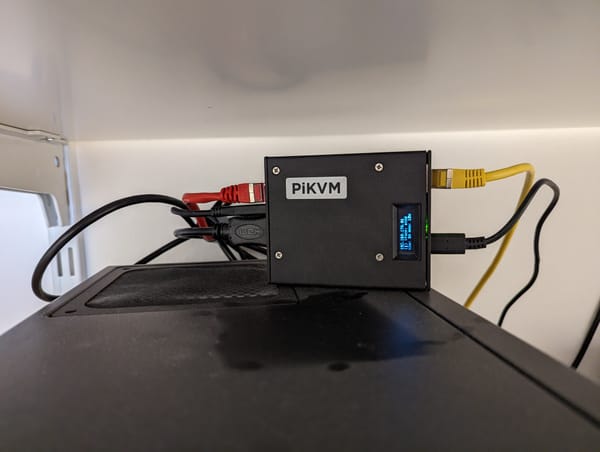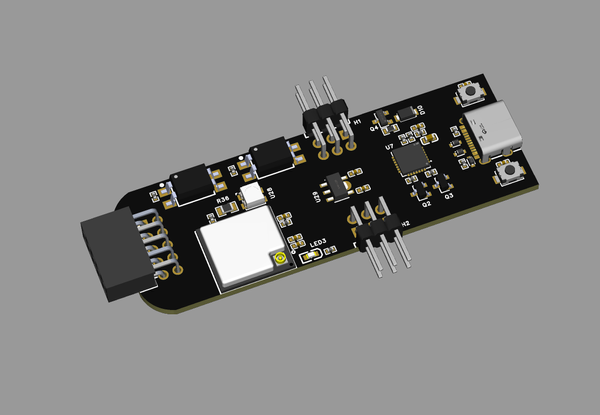Swimming Tips
A collection of tips for becoming a better swimmer.
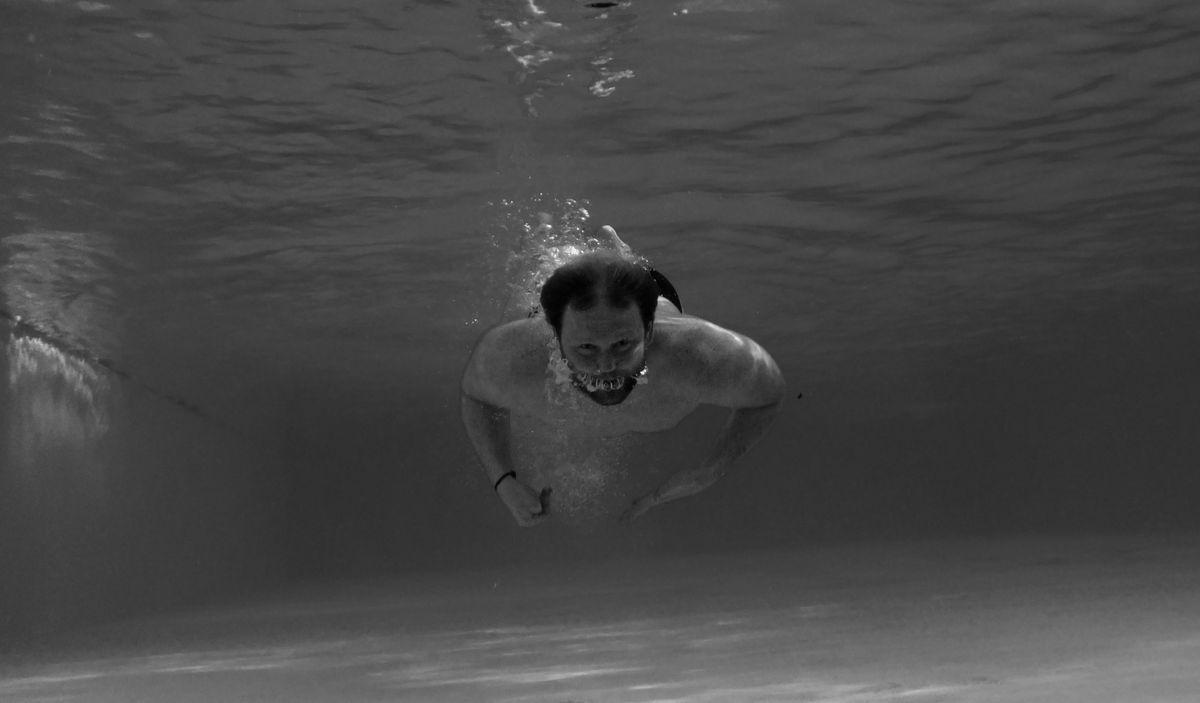
This is gonna be a bit off-topic, but also not since this is my blog 😉. This is for people who want to improve their swimming. A few tips regarding equipment, etc.
I started swimming pretty young. Trained kids for over 12 years. Swimmed competitive (DLRG) for some time.
Now I maintain this as my hobby sport. Occasionally, I train friends, and colleagues to learn freestyle or pass a certain swimming test.
If you are in my area feel free to get in touch!
Here are some of my notes and tips for beginners I always tell everybody. I will keep this updated if I get something new.
Goggles
What makes a good pair of goggles?
You should be able to adjust the nose bridge and fix it after you find the right size. Mine it so well, that I can swim without the strap for quite some time.
The goggles themselves should not overlap with your eyebrows, otherwise, water will get in. It depends on your head shape but check for this.
The strap should be easy to adjustable and replaceable.
In my personal opinion, there is only one true swim goggle and that is a Swedish swim goggle.
I own a transparent pair for indoor swimming and a dark pair for the summer if the sun is too bright.
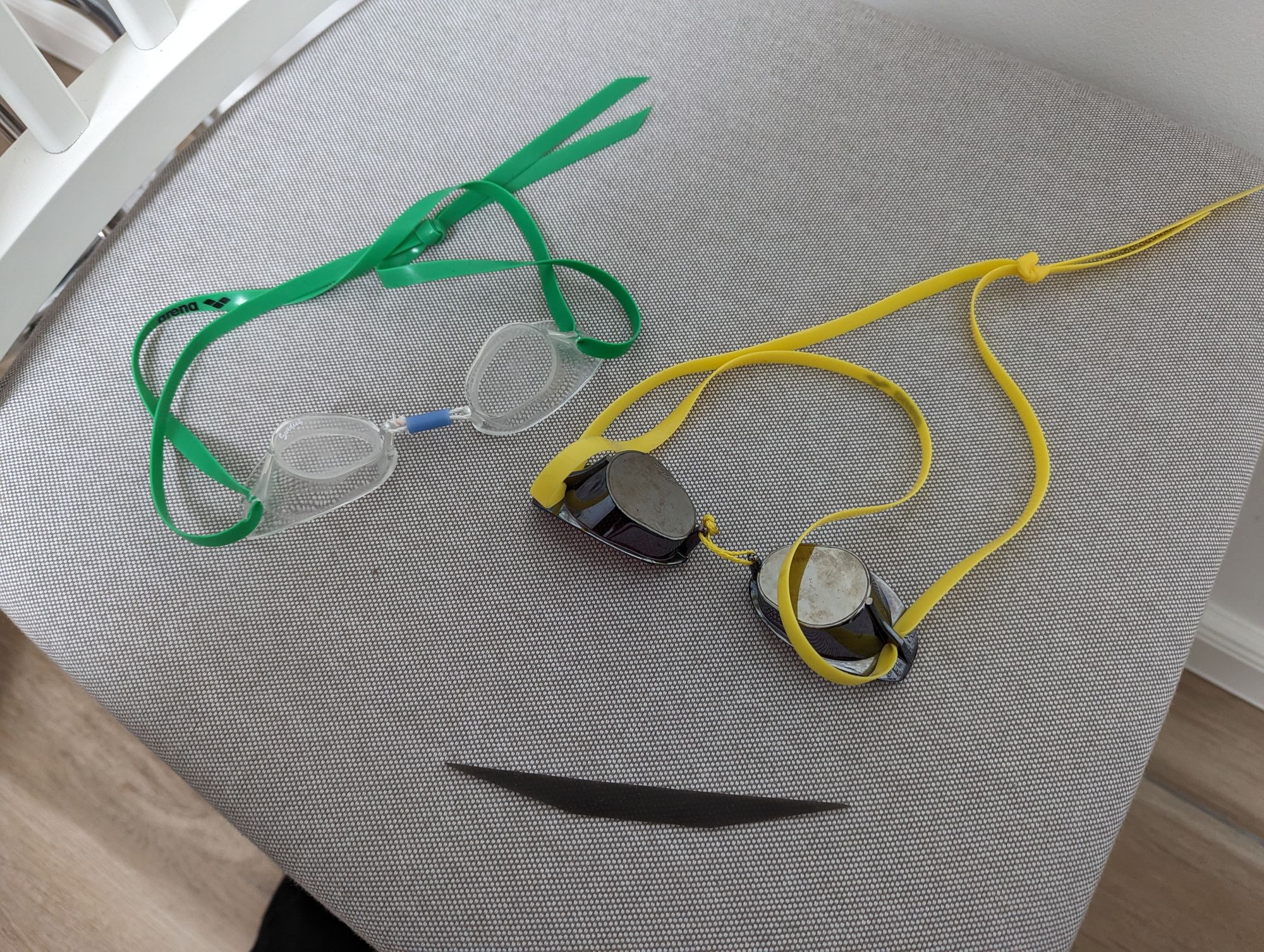
Those come with a small silicon tube and a string. You can also use the rubber band thingy but I prefer the string. It is a bit fiddly to adjust and get everything right but I did that once and I have used those goggles for over 10 years now.
The original Swedish goggles are made by Malmsten but there are other brands as well. And those are completely made out of plastic. So these are quite hard. My personal preference. They fit so well that I occasionally swim without a strap when they break during training.
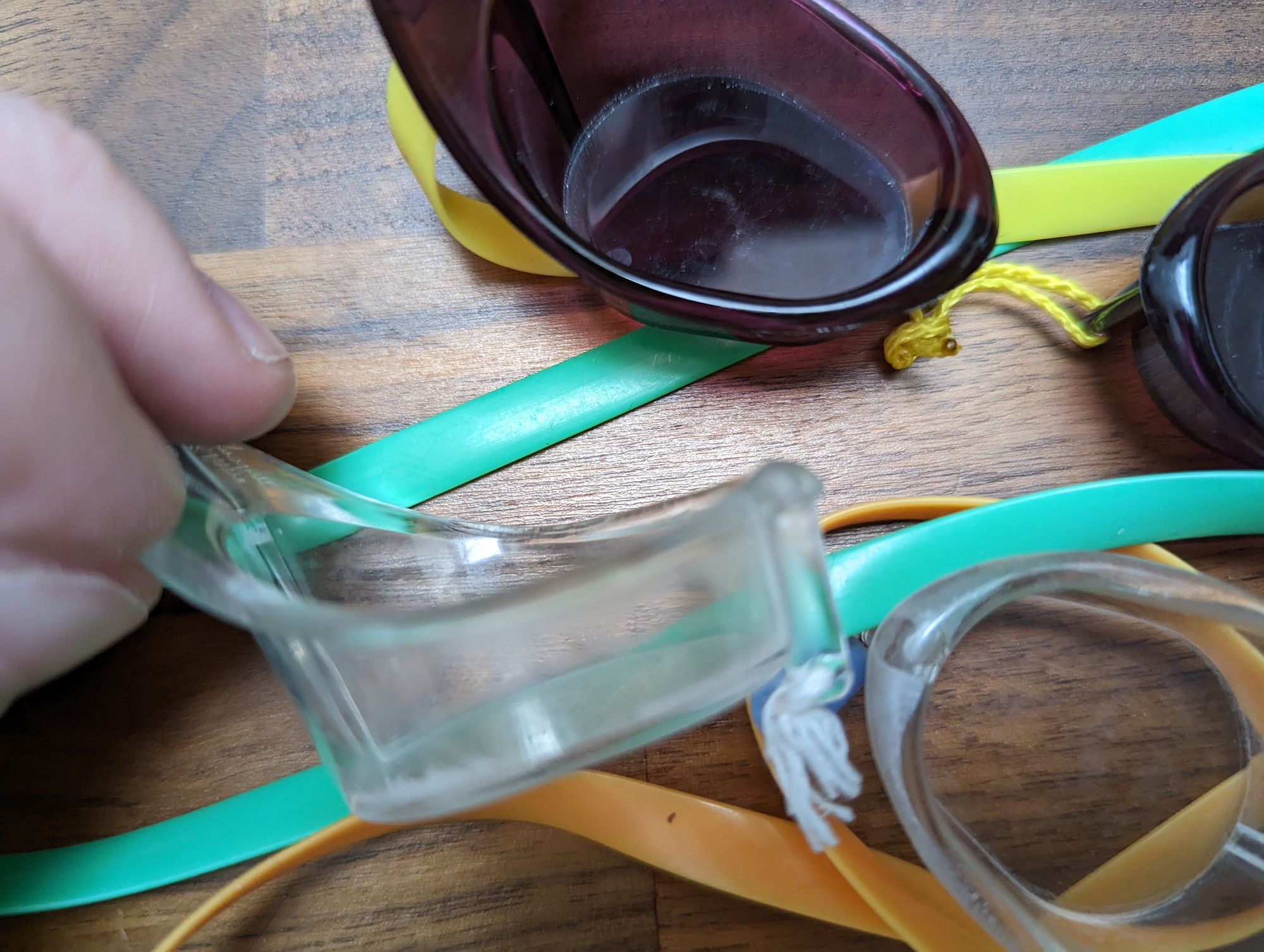
There is also a soft version of goggles. The contact piece feels like rubber and is a bit softer. My girlfriend likes the soft ones better. I had both and prefer the hard ones.
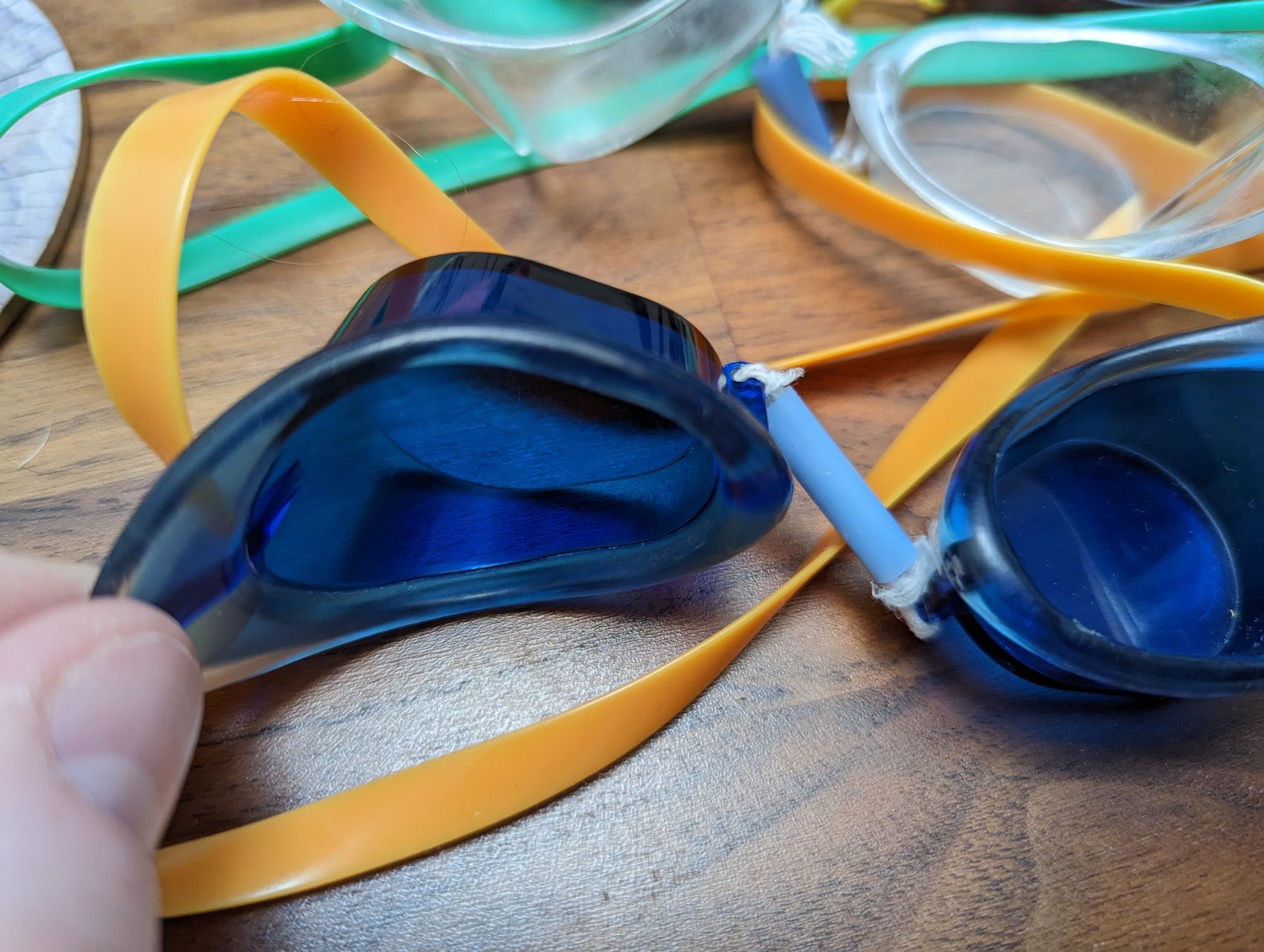
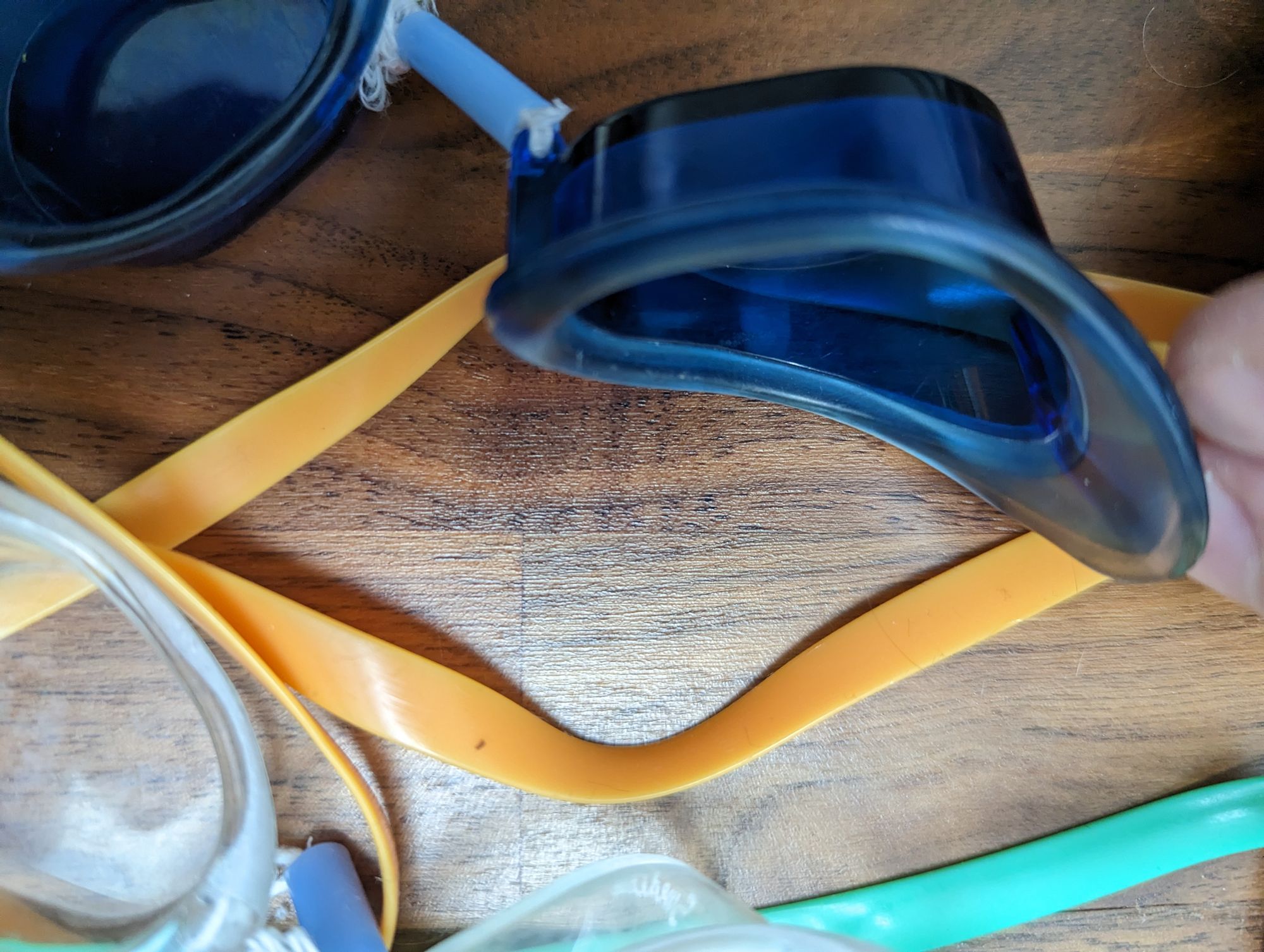
Soft version of Sweden Goggles
When I bought my Sweden goggles they had a strap included which broke quickly. It got bridle and porose after a short amount of time. So do yourself a favor and buy a pack of extra goggles straps. I have good experience with the arena racing goggles silicone strap kit.
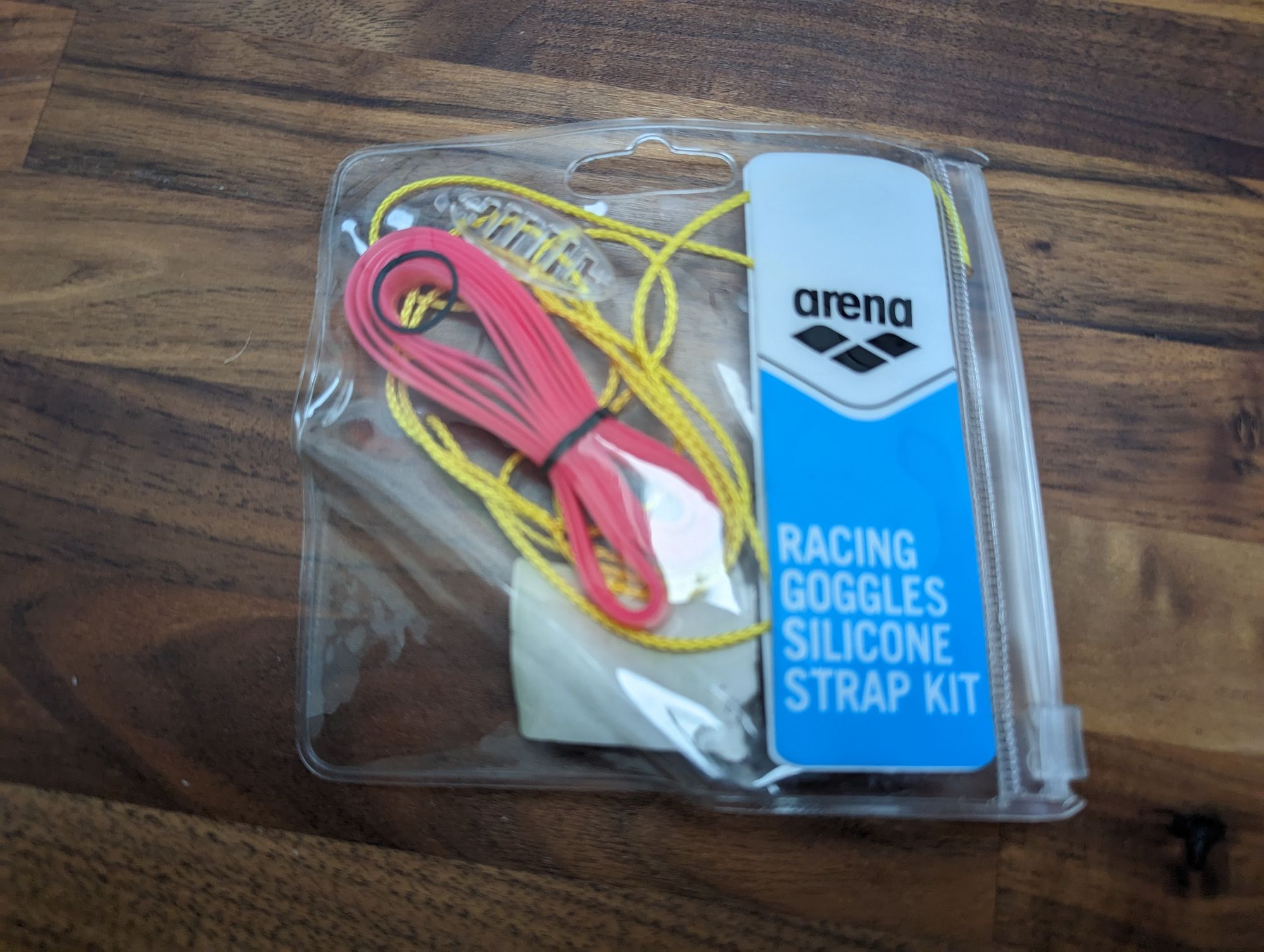
Always have a spare strap with you when swimming. There is nothing more annoying than having a broken strap in the middle of a swim. As I said before, I can swim without a strap for some time but it is not ideal.
Swim Cap
Those are personal preference. I dislike them and do not use them. Sometimes I had to wear them, like at events or some competitions. That is also where I have all of my swim caps from. But you do you.
One benefit of swim caps is that they keep your hair out of your face. Especially when you have long hair.
The other benefit is they keep your head warm. That can be handy when you are training outside in the winter or beginning of summer when it is still cold.
Pullbuoy
If you want to learn freestyle the pull boy is your friend.
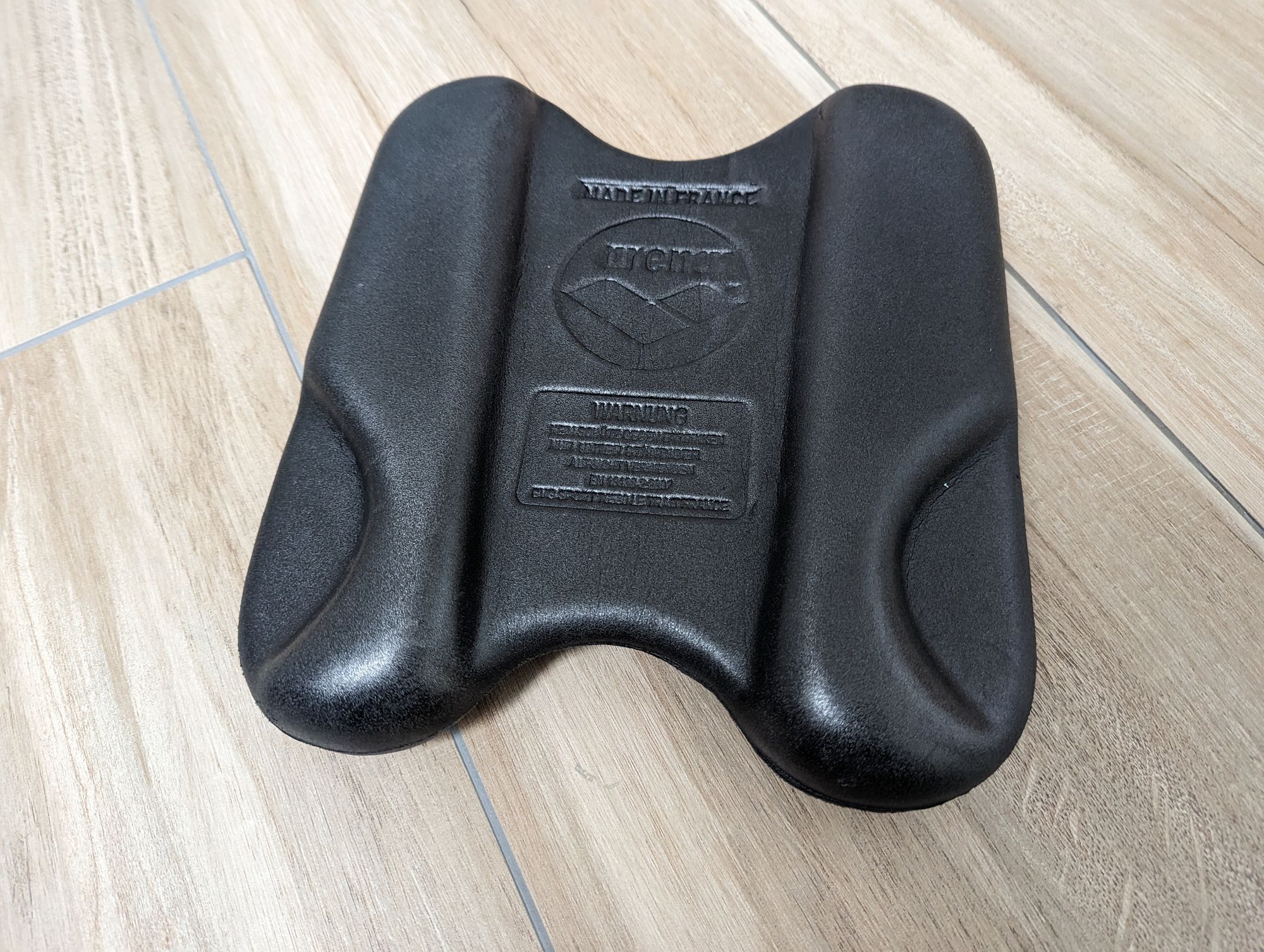
The most important tool to learn freestyle is the Pull Buoy. You can isolate the legs and focus on the arms and your breathing. That is what most people struggle with in the beginning and will have the greatest impact with. To finally get enough oxygen into your system.
There are different forms and sizes of the Pull buoy but get the one above. It is the most versatile one. You can put it between your legs, and use it with your hands. It is small enough to fit into a bag and it does NOT soak water like a sponge.
Fins
I have some generic short fins.

They are fun and give your legs a nice exercise. Also, it is crazy how fast you can go compared to just swimming without fins. Give them a go and make your training fun. No specific recommendation. I think I got these from Decathlon when I was on a surfing trip in France.
Paddles
I have never used them. I just know that you need to be careful with them since you can mess up your shoulders. Since I had shoulder surgery in 2020 I guess I will not try them. I would not recommend them for beginners.
Swim Coach apps
I personally swim whatever I want. But occasionally I use this app to create a training session. Might be helpful to make the training a bit more interesting with variation.

YouTube resource
The best thing to learn swimming is to let someone with more experience look over you. It is amazing what people think they do in the water and what actually is happening.😅 Especially for freestyle.
However, the internet is amazing and it sure as hell does not hurt to look up up to swim. This is a good YouTube channel for those interested in becoming a better swimmer:
Runny nose after swimming?
For years after training, I would have a stuffed nose, runny nose, or sneeze like crazy. My mother would ask me 3-4 times a week (training days) if I got sick.
Additionally, I often had problems falling asleep after training. Especially Fridays because I was back up around 22:00 from training. A stuffy nose and being pumped up is not a good combo to sleep with.
It took me years (early 30s) to figure out, that this is called Schwimmerschnupfen in German. Literally translated: swimmers cold.
There is even a study on this topic:

Basically, your nose reacts kind of allergic to whatever is in the water. Also can happen in open water with pollen for example.
My solution to this problem today is a nasal rinsing after the training. 0.5 liters of warm salt water. That is about 0.17 oz in freedom units for my US readers. Just put a teaspoon of pure salt into that and mix until it dissolves. That is a standard 9% salt solution.
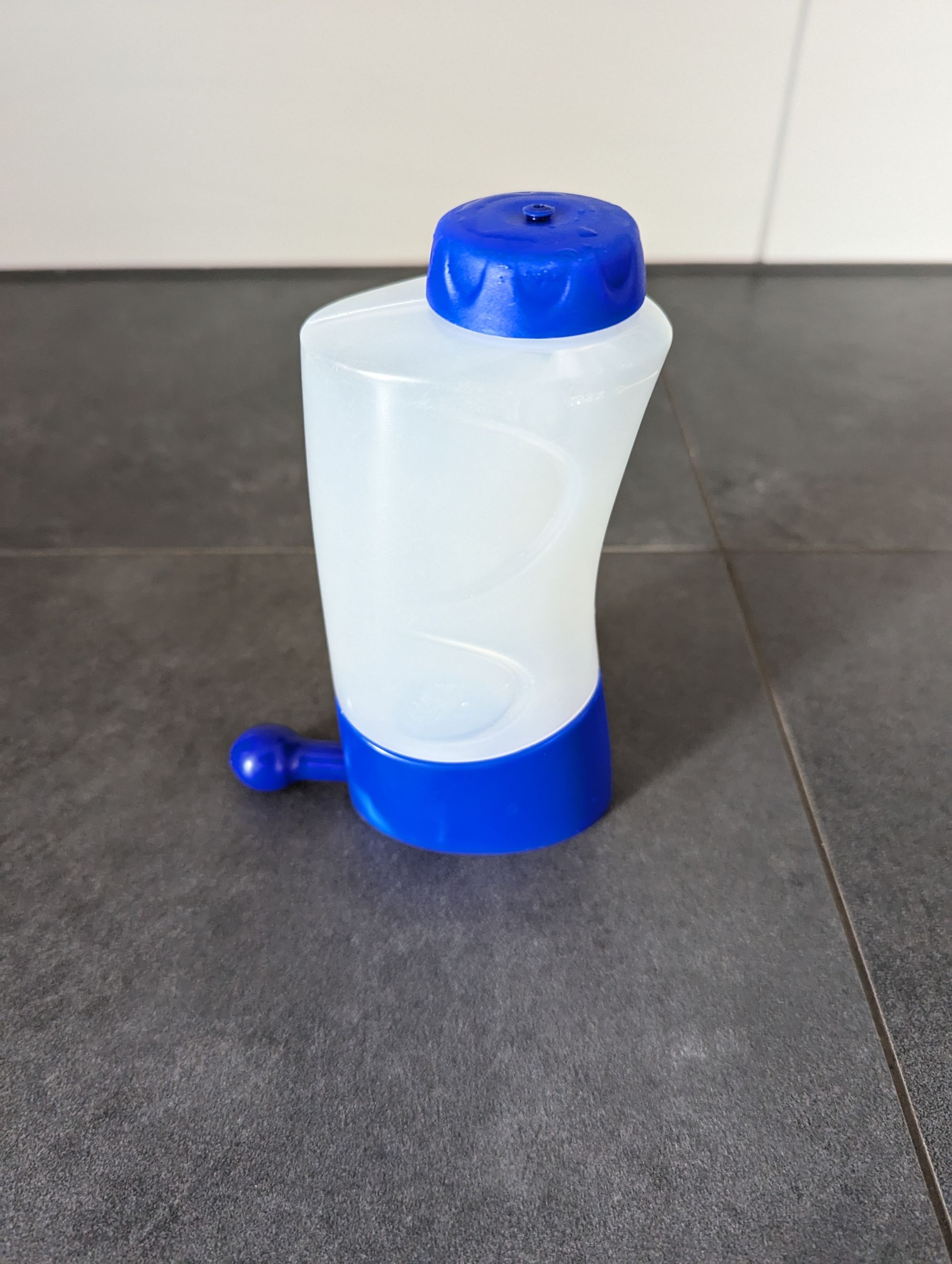
You got the right dose when it basically tastes like tears. You will know when the solution is not right. Too little and it will kind of burn. I forgot the salt a few times and that is really not comfortable. Too much is not too bad. It does not feel that uncomfortable as too little though.
I heard that nose clips could work as well, but I have not tried them yet.
Please let me know if you got the swimmers cold as well and how you cope with it. It baffles me that I learned about it so late.
❤️ Enjoy the content?
Forward to a friend and let them know where they can subscribe (it is here).
Questions or feedback? Just leave a comment!
Have a great day!





